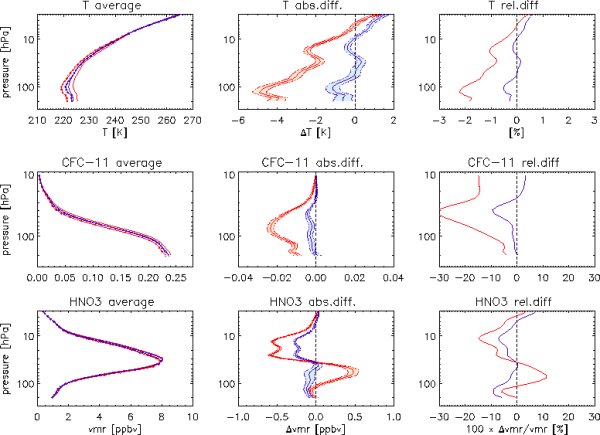Impact of temperature field inhomogeneities on MIPAS retrievals
Retrieval without (red curves) and with (blue) inclusion of the horizontal temperature gradient in the forward model give different results for ascending and descending orbit parts (left column). The absolute (middle column) and relative (right) differences between data of ascending and descending orbit parts,which are expected to be close to zero, show that there is a significant improvement for temperature, CFC-11, and HNO3 in the retrievals including the temperature gradient. Nine days of January 2003 comprise the used data set.
Envisat performs a sun-synchronous orbit. Due to the associated
longitude drift, MIPAS measures limb radiance spectra of a certain
region on Earth with approximately 12 hours time difference.
On the dayside data is measured during the descending orbit part
with the instrument looking northwards,
on the nightside it is measured during the ascending part of the orbit looking southwards.
In the difference of both measurements the influence of the
viewing direction can be seen while other error sources should cancel
out to first order.
It is found that in regions of strong horizontal temperature gradients
there is a conspicuous difference in the lower stratosphere.
Monthly means of the ascending-descending differences can reach maxima of
20% for CFC-11, CFC-12, HNO3, H2O and 10% for CH4 and N2O
if the temperature gradient is not included in the forward calculations.
For details, see: Kiefer et al., AMT, 3, 1487-1507, 2010, doi:10.5194/amt-3-1487-2010

